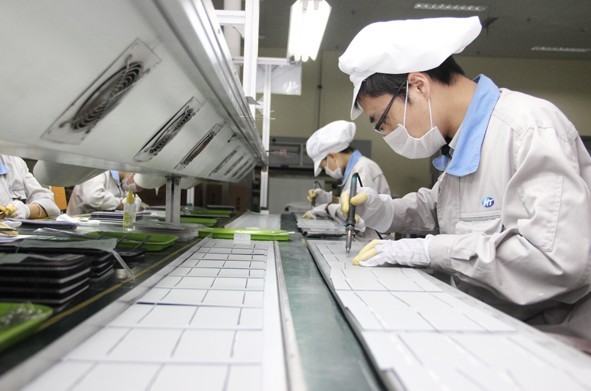
A recent study by researchers at the Massachusetts Institute of Technology and the United States Department of Energy concluded that the key reason China can make solar panels for about 23 percent less than US companies is economies of scale. Provided To China Daily
China dominates the world in solar-panel production because it has achieved economies of scale and well-developed supply chains, according to a study by the Massachusetts Institute of Technology and the United States Department of Energy.
The study found that those factors were more significant in China's domination of the production of photovoltaic systems than its low labor costs.
"The competitive advantage of China is not inherent; it is built and therefore can be equalized," the study said.
As of 2011, 63 percent of the world's solar panels were produced in China, according to the study by researchers at the Massachusetts-based MIT and the Energy Department's National Renewable Energy Laboratory.
The researchers estimated the costs for virtually all raw materials, labor, equipment and overhead.
"We developed a bottom-up model," said Tonio Buonassisi, associate professor of mechanical engineering at MIT and a co-author of the report, which appears in the current issue of Energy and Environmental Science journal. "We added up the costs of each individual step."
Buonassisi described the team's analysis as "very rigorous, it's down in the weeds. It doesn't rely solely on self-reported figures from manufacturers' quarterly reports. We really took great care to make sure our numbers were representative of actual factory costs".
A crucial parameter in the study was the minimum sustainable price, which is the total cost of manufacturing plus a sustainable profit margin.
To calculate that number, the team took the costs of producing the silicon wafers, which are then made into cells. They then added indirect costs such as research and design and supplier discounts.
The MSP for most manufacturers was above current prices in 2012. At that point, China ramped up its capacity. "They expanded really fast and caught a lot of people by surprise," said Douglas Powell, a doctoral student in mechanical engineering at MIT and co-author of the report.
China does have a small edge in labor costs, the study acknowledged, but it said that doesn't have a very significant impact in a production process as highly automated as PV module manufacturing.
Wage savings give China an advantage of 7 US cents per watt over US counterparts, but that advantage can easily be offset by regional factors such as inflation, according to the report.
The key reason China can make solar panels for about 23 percent less than US companies is economies of scale, the study concluded. The typical Chinese PV factory is four times larger than a typical US plant and can negotiate better contracts with suppliers. Equipment can be used more efficiently because machines can be scheduled to run in synchonization with the various stages of the process.
What the study makes clear, Buonassisi said, is that China's edge in solar-panel production "can be replicated, if the right conditions are met".
The key is to bring the cost of installed panels into competition with the cost of electricity from the grid - without subsidies or tax breaks. The researchers predict that goal will be achieved by 2020. By then, much larger PV manufacturing facilities will be economically feasible worldwide - not just in the US and China.
"Today's technology is not quite there yet," Buonassisi said, but "we could be hitting grid-competitive costs within the next few years", and we can look for a surge in installations.
"China and the US share a common goal," he said. "Developing a low-pollution PV technology that is sustainably profitable to manufacture and deploy worldwide. Our descendants may well judge us by our ability to realize this future of great potential."


















































